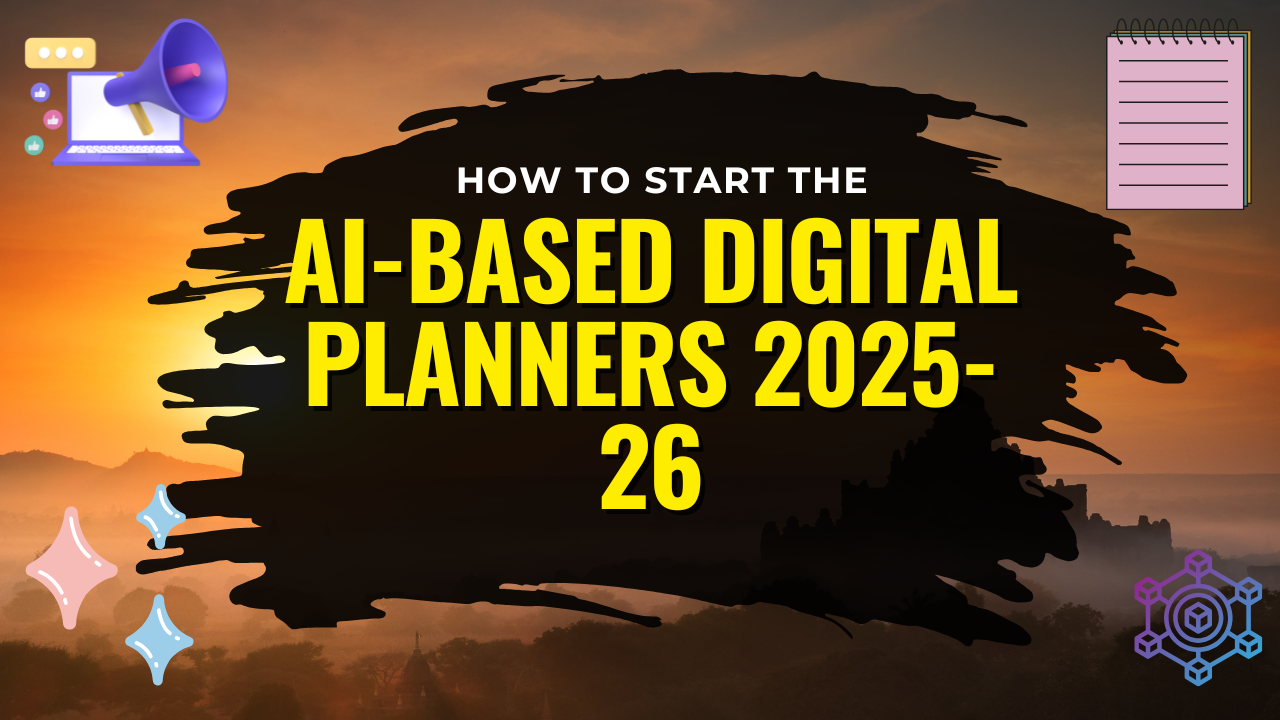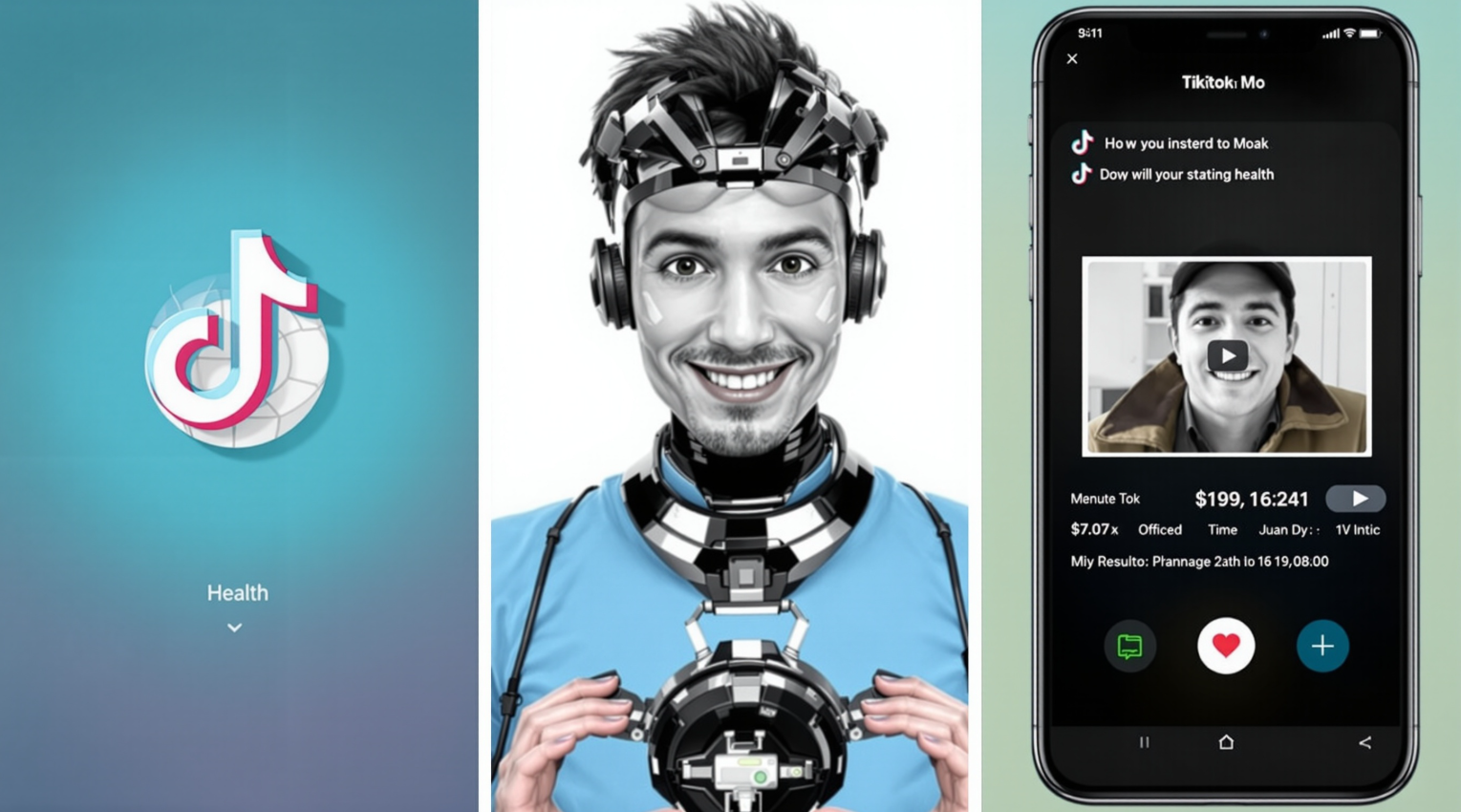
10 AI Tools to Learn Before 2026 (All Free!)
Introduction:
Today i am going to tell you Why 2025 is the Perfect Time to Dive Into AI Let’s be honest—just a couple of years ago, artificial intelligence felt like an exclusive club. You needed technical expertise, a big budget, or serious coding skills just to get past the velvet rope. But 2025? The doors aren’t just open—they’ve been blown clean off. This is the year AI truly becomes for everyone. And I’m not just saying that. The tools have evolved from clunky, expensive novelties into sleek, powerful, and—most importantly—free platforms you can start using in under five minutes. No PhD required. google ai free tools
I remember testing some of the earliest “AI writing assistants.” The results were… comical. We’re talking word salad with a side of gibberish. It was easy to write off the whole trend as overhyped. But the progress since has been nothing short of breathtaking. Today, I use AI daily. It helps me break through creative blocks, draft emails in a tone that actually sounds like me, and brainstorm ideas for projects that would’ve taken hours of staring at a blank page . No coding AI And I’m doing it all on free tiers. Powerful AI tools free
Here’s why right now is the moment: the competition is ferocious. Giants like Google, OpenAI, and Anthropic, along with brilliant startups, are in an all-out arms race for your attention. And you know what that means? They’re practically giving away their best technology. These aren’t gutted, useless free plans. They’re fully-featured test drives designed to show you exactly how powerful AI can be. They want you to get hooked on the magic. Free AI platforms And you will.
This isn’t about chasing a trend anymore. It’s about unlocking a new layer of capability for your creativity, your productivity, and your career. The barrier to entry isn’t just low—it’s gone. If you’ve been waiting on the sidelines, watching the AI revolution unfold and wondering when to jump in, I’m telling you: the wait is over. Your timing is perfect. The tools are here, they’re powerful, and they’re waiting for you. Let’s dive in.
Why 2025 is the Perfect Time to Dive Into AI
Let’s be real. A year ago, AI felt like a party for developers and tech billionaires. The rest of us were just peeking through the window. But 2025? This is our year. The doors have been blown off. The tools have matured from clunky novelties into genuinely powerful assistants that won’t cost you a dime to start with. I remember trying early AI writers—they produced such gibberish I thought it was a lost cause. Now? I use these tools daily to break through creative blocks, brainstorm wild ideas, and do in minutes what used to take hours. The best part? The competition is fierce. Companies are fighting for your attention, which means they’re offering insane value for free. This isn’t just about keeping up with trends; it’s about unlocking a new layer of potential for your projects, your career, and your creativity. If you’ve been waiting for the right moment to stop watching and start doing, I’m telling you: it’s today.
Before You Begin: A Realistic Look at “Free” AI
Alright, let’s pump the brakes for just a second. Before you run off to generate a masterpiece, we need to have a quick chat about what “free” actually means in the AI world. Managing your expectations now will save you a ton of frustration later. I’ve seen too many people get excited, hit a limit, and then give up entirely. Don’t be that person! Think of these free tiers not as the finished product, but as the most generous “test drive” you’ve ever been on. You get to take the sports car out on the highway, feel the power, and see if you like the handling. But eventually, you have to bring it back to the dealership—unless you decide to buy. This model is the reason these incredible tools exist at all. It’s a fair trade. So, let’s break down the two biggest secrets to having a good time on this test drive.
The Freemium Model: It’s Not a Trap, It’s a Taste
The word “freemium” can leave a bad taste in your mouth. We’ve all been lured in by a free mobile game only to be pestered to buy gems every five seconds. But with professional AI tools, it’s different. It’s more like a subscription box that sends you a few amazing samples for free, hoping you’ll love them enough to sign up for the full box. For example, a tool might give you 15 incredible image generations per day. Is that enough for a professional graphic designer working on a client project? Probably not. But is it more than enough for a beginner to experiment, learn the basics, and create stunning visuals for a personal blog or social media post? Absolutely. The limit isn’t there to annoy you; it’s there to keep the lights on for everyone. My advice? Embrace the limit. It forces you to be more thoughtful with your prompts. Instead of generating 100 mediocre images, you’ll focus on making those 15 prompts count. That’s a better skill to learn anyway.
Your Magic Wand: Why Your Prompt is Everything
Here’s the biggest misconception beginners have: they think AI tools are oracles that just know what they want. Nope. Think of them instead as genius-level interns who desperately need clear instructions. The magic isn’t in the tool itself; it’s in the prompt you feed it. This is the single most important skill you will learn. Garbage in, garbage out. A prompt like “a dog” will give you a generic, boring result. But a prompt like “A photorealistic portrait of an wise old Golden Retriever wearing a tiny pair of spectacles, sitting in a grand library, sunbeams streaming through a window, cinematic lighting” – that’s going to tell the AI exactly what you’re dreaming of. The difference is night and day. My personal trick? I talk to Claude or ChatGPT like I’m briefing a colleague. I give it context, examples, and the mood I’m going for. The more descriptive you are, the more amazed you’ll be. Don’t be afraid to get weirdly specific. That’s where the real magic happens.
How We Picked These Beginner-Friendly Gems
With a thousand AI tools popping up every week, how did I possibly choose just ten? It wasn’t easy, I’ll tell you that. I didn’t just pick the most popular ones. I put on my “beginner hat” and asked: which tools would have made my own journey easier? The main thing I looked for was a low barrier to entry. If I had to watch a 30-minute tutorial just to generate a simple image, it got cut. Next, I prioritized a genuinely useful free plan. Some tools offer a “free” tier that’s so gutted it’s practically useless—like giving you one credit a month. No thanks. The tools on this list let you actually do something meaningful without paying. Finally, I asked: does this tool solve a real problem for a beginner? Does it help you write, create, code, or learn more effectively? I leaned towards tools that are leaders in their category (like Midjourney for art) because learning them is a valuable skill. This list is a curated starter pack, not an exhaustive encyclopedia. It’s designed to give you the maximum bang for your zero bucks.
The All-Rounders: Chatbots & Content Wizards
If you only ever try one category of AI tool, make it this one. These large language models (LLMs) are the Swiss Army knives of the AI world. They can write, summarize, brainstorm, translate, and explain complex topics like a patient teacher. They’re your brainstorming partner, your editor, and your research assistant rolled into one. Each one has a slightly different personality and strength, which is why I’m recommending three. It’s like having a toolbox with a hammer, a screwdriver, and a wrench. You could bang in a screw with the hammer, but why would you when the screwdriver is right there? I constantly switch between them depending on the task. Pro tip: don’t get loyal to one. Be a polyglot. Use the right tool for the job. You’ll be shocked at how much more you can get done.
ChatGPT: The Classic Conversationalist
Ah, ChatGPT. The one that started it all for most of us. It’s the comfortable hoodie of AI tools—reliable, familiar, and great for everyday use. Its biggest strength is its versatility and its ability to maintain a coherent, conversational thread. Need to write a cover letter? ChatGPT will knock out a solid first draft in seconds. Stuck on an email? It’ll help you rephrase it with the right tone. Planning a trip? It can generate a decent itinerary. I use it constantly for quick tasks and for its fantastic code-writing abilities. The free version runs on OpenAI’s GPT-3.5 model, which is still incredibly powerful for most beginner tasks. The catch? It can be a bit… generic sometimes. Its knowledge is also frozen at a certain point (it’s not real-time search), so don’t ask it about yesterday’s news. But for getting your feet wet and having a helpful, general-purpose assistant, it’s still the king. It’s the first tool you should open.

Claude: The Thoughtful Brainstorming Partner
If ChatGPT is a quick-witted friend, Claude is the thoughtful, detail-oriented professor. Developed by Anthropic, Claude’s standout feature is its massive “context window.” This is a nerdy way of saying it can remember and process incredibly long documents. You can paste a full 10-page PDF and ask it to summarize key points or find contradictions. It’s phenomenal for that. But where Claude truly shines for beginners is in its writing style. It tends to produce more nuanced, structured, and thoughtful text. I often use it to brainstorm ideas because it feels less like it’s just giving me the first thing that pops into its head and more like it’s actually reasoning. It’s also less hesitant to decline inappropriate requests, which speaks to its built-in safety principles. The free version is incredibly robust. For anyone looking to work with long documents or who prefers a more measured, analytical response, Claude is your go-to.
Gemini: Google’s Research Powerhouse
Formerly known as Bard, Gemini is Google’s answer to ChatGPT. And its superpower is sitting right in front of us: integration with Google’s ecosystem. If you live in Google Search, Docs, and Gmail, Gemini feels like a natural extension. Its biggest advantage for a beginner is its ability to tap into real-time Google search data. Need to know the latest trends or news on a topic? Gemini can weave that into its response, while ChatGPT’s knowledge is static. I often use it as a research starter kit. Asking it to “explain quantum computing like I’m 10 and give me three recent news articles about it” yields fantastic results. It also has a neat feature where it can often provide links to its sources, which is huge for verifying information. The user interface is clean and simple, making it very approachable. If your primary use for AI is to learn, research, and get up-to-date information, Gemini is an indispensable tool. text to animation ai free tools
The Artists: Unleash Your Inner Creator
This is the category that will truly blow your mind. Text-to-image generators are, in my opinion, the most tangible evidence of the AI revolution. You type a sentence, and a few seconds later, you have a unique piece of art. It’s pure magic. The creative possibilities are endless, from conceptualizing a book cover to generating ideas for a painting to just creating a wild wallpaper for your phone. The key is to not think of these as tools that will replace artists, but as tools that will empower everyone to be more creative. You don’t need to know how to draw or paint. You just need an imagination. And the best part? Playing with these tools is incredibly fun. You’ll lose hours to it. Fair warning.
Midjourney: Where Your Wildest Ideas Become Art
Let’s be clear: Midjourney is the quality king. If you’ve seen an AI image online that made your jaw drop, there’s a very good chance it was made with Midjourney. Its ability to understand artistic styles, lighting, and composition is unmatched. Want an image in the style of Studio Ghibli? Or a cyberpunk portrait? Or a hyper-realistic photo of a dragon? Midjourney is your tool. Now, the elephant in the room: it runs on Discord. This is weird for beginners. You join a server and type commands into a chatroom. It feels technical, but don’t let that scare you. The community is actually super helpful, and seeing others’ prompts is a fantastic way to learn. The free tier gives you a limited number of generations, but it’s enough to fall in love. If your priority is breathtaking aesthetic quality and you’re willing to learn its quirks, nothing else comes close. It’s the Ferrari of AI image gen.
Leonardo.Ai: The Painter’s Digital Playground
If Midjourney is the Ferrari, Leonardo.Ai is the fully-loaded, customizable Jeep. It’s incredibly powerful and, for many, a more accessible and forgiving starting point. It runs through a normal web app (no Discord!), which is a huge plus for beginners. Its interface gives you far more control upfront—you can tweak everything from the model used to the prompt strength to the image dimensions. But its killer feature for learning is its “AI Prompt Generation” tool. Stuck for ideas? You can give it a simple concept (“a knight”) and it will generate a list of rich, detailed prompts for you to use. It also has a fantastic community feed where you can remix the prompts and settings from other people’s public images. This is a goldmine for education. The free daily tokens are very generous. For beginners who want more hands-on control and a less intimidating environment, Leonardo.Ai is arguably the best place to start.
Canva AI: Design Superpowers for Everyone
You might be thinking, “Canva? The poster-making website?” Yes! And they’ve baked AI tools directly into their platform, and it’s a game-changer for non-designers. This is the ultimate practical choice. Why learn a separate tool when you can generate an image right inside the design you’re working on? Their “Magic Design” tools can generate full social media posts, presentations, or documents from a single prompt. Need an image for your blog header? Use “Text to Image” to generate it, and it’s already placed in your design, sized correctly. The “Magic Write” feature is a basic LLM for brainstorming copy. The sheer convenience is its superpower. The free plan offers a good number of credits. If you’re a blogger, social media manager, student, or small business owner who already uses Canva, this isn’t even a choice. It’s a must-use. It seamlessly integrates AI into your existing workflow.
The Producers: Audio & Video Made Easy
Moving from static images to dynamic media feels like another huge leap, but the tools have gotten scarily good. This is where AI starts to feel like science fiction made real. We’re talking about generating human-like voices from text and creating videos with AI avatars that can speak in any language. The applications are profound, from creating voiceovers for videos to translating content for a global audience. The barrier to entry for high-quality media production has collapsed. You no longer need a studio microphone or a camera-ready presence. You just need an idea.
ElevenLabs: Voice cloning? Seriously, it’s wild.
I want you to prepare for a surreal experience. Go to the ElevenLabs website, type a sentence into their speech tool, and hit generate. What you’ll hear will not be the robotic, monotone text-to-speech of a decade ago. It will be a nuanced, emotive, and startlingly human voice, complete with natural pauses and inflections. It’s uncanny. Their technology is, simply put, the best in the world for AI voice generation. The free plan gives you a monthly character limit and access to their voice library. You can use it to narrate your videos, create audio versions of your blog posts, or even bring characters to life in a game design document. I used it to generate a voiceover for a personal travel video, and my family thought I’d hired a professional. For anyone looking to dabble in audio content, this tool is non-negotiable. It’s that good.
HeyGen: Make your avatar speak any language. Yes, really.
HeyGen is the video equivalent of ElevenLabs. It allows you to create an AI avatar (or upload a photo of yourself!) and make it deliver a script in a stunningly realistic way. But the party trick—the thing that will break your brain—is its video translation feature. You can upload a video of yourself speaking English, and HeyGen will generate a new video where your avatar lip-syncs perfectly to a Spanish, French, or Hindi translation of your script, all in your own cloned voice. It’s not perfect, but it’s 90% of the way there and lightyears ahead of anything else accessible to consumers. The free tier gives you one credit to create a short video, which is enough to try this magic for yourself. For entrepreneurs, educators, or creators looking to reach a global audience without learning a new language or hiring translators, this technology is revolutionary.
The Productivity Boosters: Work Smarter
Beyond creation and art, AI is a phenomenal lever for productivity. It can automate the boring stuff, surface information instantly, and help you learn complex skills faster. These tools are less about flashy demos and more about giving you hours of your week back. They are the silent workhorses that make everything else easier.
Perplexity AI: Your Research Assistant on Rocket Fuel
I’ve saved myself countless hours of googling with this tool. Perplexity AI calls itself an “answer engine,” and that’s the perfect description. Unlike a chatbot that just generates text, Perplexity is built from the ground up to provide accurate, sourced answers. You ask a question, and it responds with a concise summary, complete with citations from live web sources. You can actually click the links to verify the information! It’s like having a super-smart research assistant who immediately provides a well-sourced report on any topic you can imagine. I use it to quickly understand new concepts, get summaries of recent events, and find expert sources. For students, writers, or just curious minds, Perplexity is a powerhouse that changes how you interact with information online. It’s arguably the most useful tool on this entire list for pure learning.
GitHub Copilot: Your First Pair Programmer (For Aspiring Coders)
This one is for the beginners who are dipping their toes into coding. GitHub Copilot is an AI pair programmer that integrates directly into code editors like VS Code. As you type, it suggests entire lines or blocks of code. It’s like autocomplete on steroids. For a beginner, this is an incredible learning tool. Stuck on how to write a function? Copilot will suggest it. Forget the syntax for a loop? It’ll fill it in. You can even write a comment describing what you want to do (//create a function that sorts a list of names alphabetically), and it will generate the code for you. It helps you overcome frustrating roadblocks and lets you focus on the logic rather than the syntax. The free version is available for students and maintainers of popular open-source projects, and there’s a free trial for everyone else. If you’re learning to code in 2025, not using Copilot is like learning to dig a ditch with your hands instead of using a shovel.
Your First 5 Minutes: Don’t Overthink It, Just Do This
Feeling overwhelmed? I get it. Here’s your simple, no-excuses action plan. Stop reading and do this right now. First, pick ONE tool. Just one. I’d suggest starting with ChatGPT or Leonardo.Ai because they’re the easiest to just jump into. Second, make a free account. It takes 30 seconds. Third, I’m giving you your first prompt. Copy and paste it: For ChatGPT: "Give me 5 creative ideas for a blog post about sustainable gardening in a city." For Leonardo.Ai: "A tranquil zen garden on a skyscraper rooftop at sunset, cinematic, hyper-detailed." Hit enter. See what happens. Tweak the prompt. Change “sunset” to “rainy night.” That’s it. You’ve started. The biggest hurdle is starting. You can learn the advanced stuff later. For now, just play. It’s supposed to be fun.
Your AI Journey is Just Getting Started
Look at you. You’ve just toured the absolute best of what free AI has to offer a beginner in 2025. This isn’t the end of your journey; it’s the very beginning. You now have a palette of tools that can help you write, design, create media, and learn with a efficiency that was pure fantasy just a few years ago. The key now is consistent practice. The more you use these tools, the more you’ll understand their quirks and strengths. You’ll develop an intuition for prompting. You’ll start to see opportunities to use AI in your daily life that you never noticed before. Don’t try to master them all at once. Pick one, get comfortable, and then move to the next. This technology is evolving at a breathtaking pace, but the foundational skills you learn today—how to prompt, how to iterate, how to leverage these models as partners—will serve you for years to come. Welcome to the future. It’s pretty fun here.
Quick Answers to Your Burning Questions
Q: Are these tools really free? Do I need a credit card?
A: The free tiers for the tools on this list are genuinely free and do not require a credit card to start using them. They operate on a credit/token system that refreshes daily or monthly. You only need a card if you choose to upgrade to a paid plan for more features.
Q: Is it ethical to use AI-generated content?
A: This is a complex but crucial question. It’s ethical to use AI as a tool (a brainstorm partner, a writing assistant, an idea generator). It’s unethical to use it to plagiarize or to misrepresent fully AI-generated work as 100% your own original human effort, especially in commercial contexts. Always check the terms of service of the platform you plan to post on. Transparency is key.
Q: What’s the single most important skill for using AI well?
A: Prompting. Without a doubt. Learning how to write clear, specific, and descriptive prompts is the master key that unlocks the potential of every single tool on this list. It’s a skill that takes practice, but it pays off more than anything else.
Q: Will AI take my job?
A: This is the wrong question. AI won’t take your job, but a person who knows how to use AI effectively might. The goal isn’t to compete with AI but to harness it to augment your own skills, making you more efficient, creative, and valuable. Think of it as your personal intern, not your replacement.



